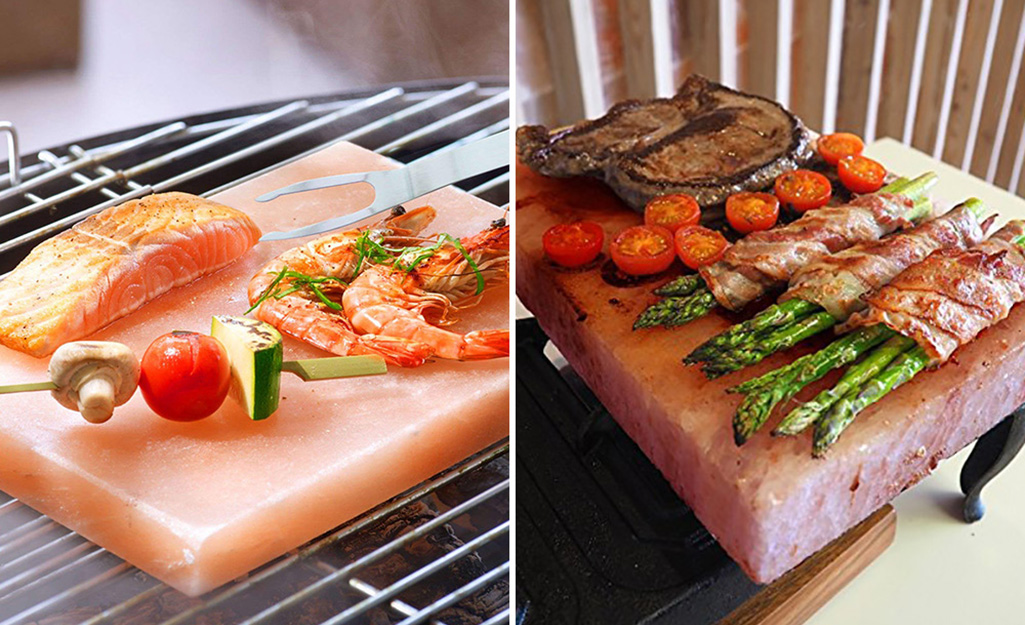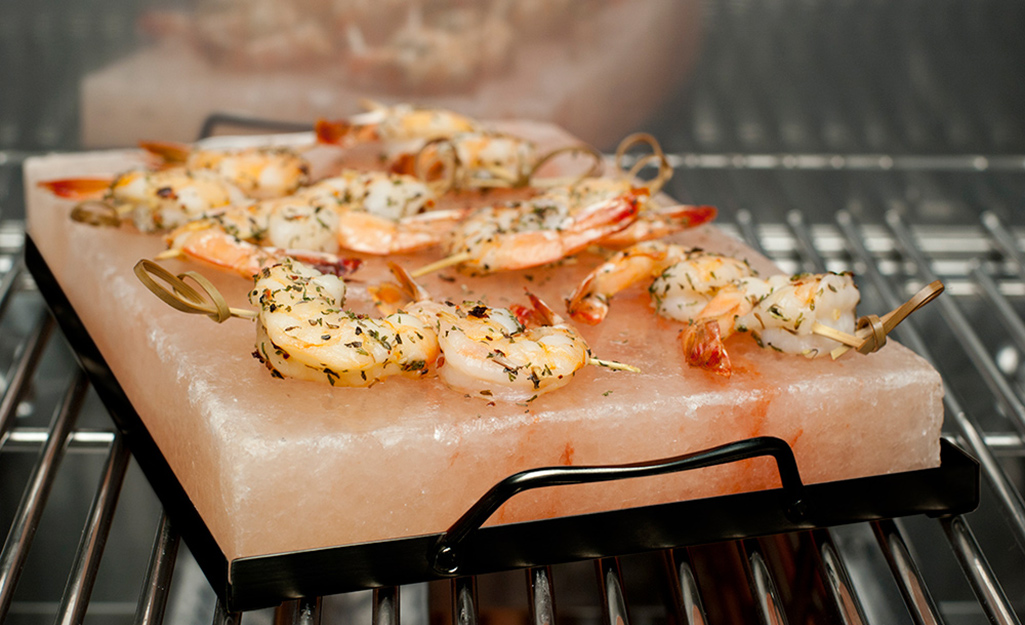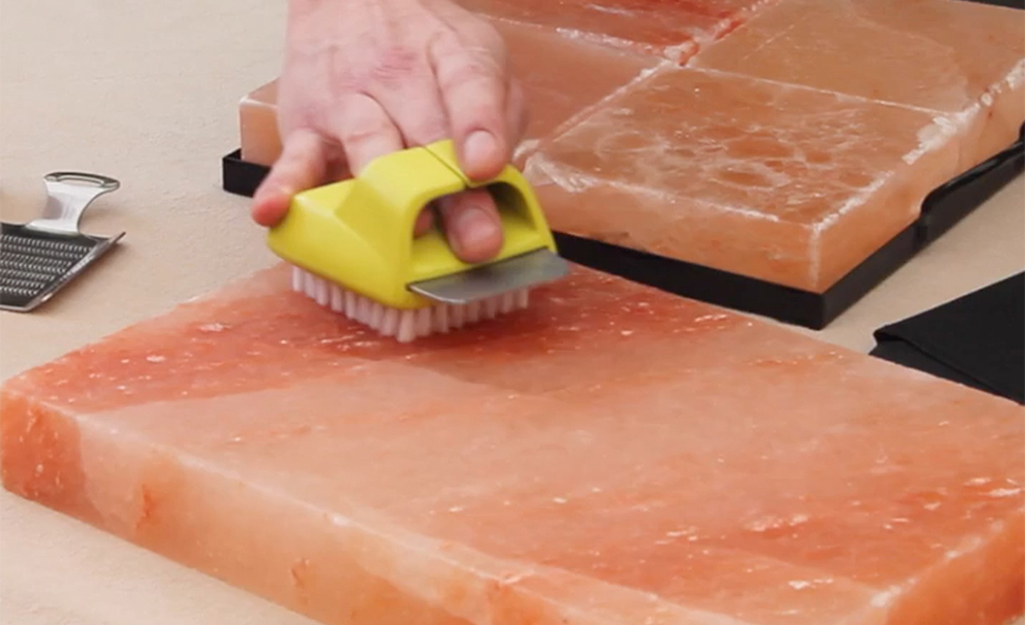How to Use a Salt Rock for Grilling

Last updated September 7, 2023
Salt blocks, salt slabs, salt plates and salt bricks are nature's cooktop and serving platter in one. Cooking on a salt block infuses the clean taste of pure mineral salt into your food.
This guide will show you how to pick the right salt slab for grilling and how to use a Himalayan salt block. It includes tips for taking care of a salt rock for grilling.
Difficulty:
Beginner
Duration:
Under 2 hours
Table of Contents
What is a Salt Slab?
How to Choose a Salt Rock for Grilling
Tempering Salt Rocks for Grilling
How to Use a Salt Rock for Grilling
How to Clean and Care for Salt Rocks for Grilling
What is a Salt Slab?

A salt block is a slab of pure salt. Himalayan pink salt is a popular option for a salt rock. Himalayan pink salt comes from millions-of-years-old crystals of salt from mines in Pakistan. It's considered the one of the purest of salts in the world. Grilling on a salt rock can add flavor to your food. You can use it on a charcoal grill, gas grill or kettle grill with meat or fish.
Himalayan salt is similar to table salt, but has about 30 percent less sodium than everyday table salt. Himalayan salt also contains small amounts of other minerals thought to have health benefits. Scientists don’t believe consuming Himalayan salt will have a significant effect on your health, though.
How to Choose a Salt Rock for Grilling

There are several factors that go into selecting the best salt rock for cooking. Salt slabs come in different sizes, thicknesses and textures. Decide if you want to use your Himalayan salt block for cooking or as a serving platter. Salt blocks that are opaque or have impurities are still lovely. They make excellent plates for serving room temperature or chilled foods.
For grilling, you will need to select a salt slab with these characteristics:
- It should be at least two inches thick.
- The salt block should be consistently translucent. An opaque or milky coloration is often an indication that the salt crystals are not densely packed.
- The salt rock should have no visible large cracks or fissures. Any moisture trapped inside the slab will expand while heating or cooling, causing it to pop or crack.
Tempering Salt Rocks for Grilling

Proper seasoning and tempering a salt block is important in order to keep it from cracking, breaking or shattering. Perform this process slowly and carefully before the salt is used for any cooking or grilling.
- Place the block on the bottom rack of the oven on the lowest heat setting (around 120 to 170 degrees).
- Allow the block to remain at this temperature for about 30 minutes.
- Increase the temperature of the oven 50 to 75 degrees at a time. Allow the block to remain at each heat setting for roughly 30 minutes before increasing the temperature each time.
- Continue the tempering process until your block has reached 550 degrees.
- Turn off the oven and allow the block to cool slowly. Keep the oven door closed until the block is completely cooled to room temperature.
- Salt blocks can develop visible cracks while heating.
How to Use a Salt Rock for Grilling

Himalayan salt blocks are perfect for salt block grilling. They are incredibly dense and conduct heat slowly but efficiently. The slab retains heat and seasons food evenly. Slabs can crack if they are heated or chilled too quickly. To ensure success, follow these simple tips for grilling on a salt block.
- You can use salt rocks in the oven, on an electric burner, on a gas grill, charcoal grill or kettle grill.
- Be sure the block is completely dry before use. A salt block needs to rest for at least 24 hours after each use.
- Heat the block slowly. Placing the block on a hot grill will cause it to crack.
- To help regulate the heat on a charcoal grill, use indirect heat to slowly heat the block.
- Once the salt slab has reached the perfect temperature, grill or sear your food as you would is cooking directly on the grates.
- After cooking, leave the salt block on the grill to cool back to room temperature before you remove it.
Tip: A salt block will retain a hot temperature for longer than you might expect. Be careful when handling a salt block that has been heated.
How to Clean and Care for Salt Rocks for Grilling

Cleaning and caring for a salt block is easy. It's a low-maintenance, natural plate that requires very little when it comes to cleaning.
- If food has gotten stuck on the salt block, remove it with a scouring pad or soft brush.
- Rinse the salt block quickly in warm water without using soap or any other cleaner. Too much water will melt the salt. Don't put your salt block in a sink full or water or in the dishwasher.
- Allow the salt slab to fully dry before you use it again. It needs to rest for 24 hours between uses to ensure it fully dries.
- Even with proper heat tempering, use and care, the salt block will eventually get thinner and smaller. At this point you can break up the remaining salt and grind or shave it onto your food.
When you know how to use a salt rock for grilling, you can take your cookouts to the next level. Invite the family or some friends over to enjoy your new culinary skill. Remember to temper your salt block before you use it. Take proper care of it once you’re finished grilling.
Ready to get your own salt block for grilling or other cookout essentials? The Home Depot delivers online orders when and where you need them.



























